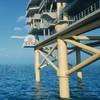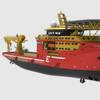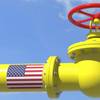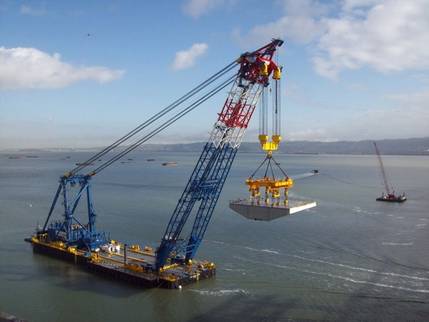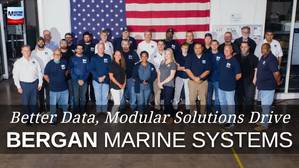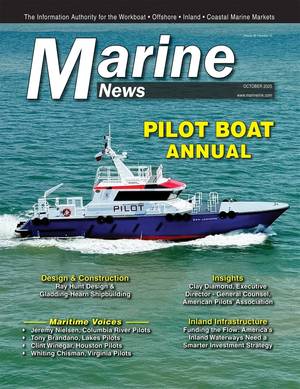Expanded Offshore Drilling: Challenges Ahead
“You got to be careful if you don't know where you're going, because you might not get there.” • Yogi Berra
Each rise in the price of oil and its companion hike in gasoline prices moves us further and further into uncharted territory. What was once an academic argument over peak oil and how long our oil and gas would last is now front page news. There is now a very public debate raging over whether new areas of 's coastline should be opened to exploration. It seems likely that new areas will be leased.
But from there the crystal ball gets a little murky. What areas might be opened and when? How long will it take to do the initial surveys of these undersea areas and what will we find?
For the workboat industry and its customers, this period of uncertainty will bring its own questions. Can the existing fleet handle the potential expansion of offshore exploration or will the industry need to build more boats? What kind of boats and how large? Will they need to operate 30 miles off the coast of or 170 miles off the coast of ?
To some extent that is putting the cart before the horse. The ban on offshore drilling would have to be lifted for east coast states. Significant surveying work must be done. The Mineral Management Service would need to set up lease sales. Offshore operators would need to develop their drilling plans. None of that will happen overnight.
But that is not the most challenging part of this whole puzzle. Vessel build programs also need to be planned in advance. Shipyard space is still at a premium and backlogs for engines, electronics and other key equipment can drive the build schedule as much as anything. New vessel delivery dates may be years down the road, meaning that the ability to meet a demand from new drilling may depend on making some decisions in the very near future.
All of this argues for a new approach to the relationship between the boat industry and the customer. The old model was based for the most part on the simple supply and demand of the marketplace. I need a boat, I ask you to supply it. If I don't need it very much, I don't offer very much money and charter it on the spot market. If I need it a lot, I pay a lot and lock it in on a term charter. When rates rise, the industry builds more boats and the boat owners absorb the risk that there will be an overcapacity.
That system may have worked well 50 years ago when boats cost $30,000 and there were no limits on where the customer could drill, but it may not see us through this next chapter in the offshore energy saga. Boats cost too much. The uncertainties about where we may expand are too high. It represents risk for the boat owners to build vessels that may not be needed and risk for the customer to commit to projects that are still theoretical. The only way to address that risk is for the customer and the boat owners to work as partners.
The perfect example of this is taking place in right now. Development of the resources in the Chukchi and off the coast of will be at the same time exciting and challenging. It will require a substantial number of ice-class, state of the art flag vessels, capable of working safely under demanding conditions hundreds of miles from the closest base of operations. Right now, there may only one OSV in the fleet that can work in those conditions.
Shell Offshore has made offshore one of its highest priorities. This spring it bid more for offshore Alaskan leases than any area since MMS began its lease auctions. One of the obstacles the company faces is making sure there are vessels to do the work when it is ready to drill. The cost of those vessels makes it impossible for a boat owner to build on spec. Shell is dealing with that risk by doing some preliminary exploratory work with existing foreign vessels, which Congress allowed it to do through an amendment to legislation two years ago. In exchange for being allowed to use those vessels now, Shell is going through a well-planned bid process to charter vessels down the road. This way Shell gets to say what kinds of vessels it will need and boat owners will have a contract in hand that allows them to get into the shipyards. Through our association, the industry has been working cooperatively with Shell to accomplish our collective goal of building the vessels needed to move into the next phase of offshore development.
It is too soon to tell, but if Shell's approach in is a good model for the future, the approach of some other operator may show the dangers of sticking to the old approach. Shell is not the only player trying to develop offshore , but it is the only company that is publically trying to spur construction of new vessels. If their competitors wait until they are ready to start developing those properties to go looking for vessels, they may find there are no domestic vessels to be had. Any attempt to support offshore projects in from foreign bases would be a political dead end for the company that attempts it. Planning needs to start now for any vessels that may go into service five years from now.
We have seen a similar situation in the MODU sector, where customers were slow to recognize that they couldn't just assume rigs would be available when they wanted them. This all argues for a new business model for the customer and the boat owners. Here are a few of the ground rules in that new model:
The Jones Act is here to stay. Congress has made it clear over the past several years that it wants maritime jobs in the oil patch to be worked by Americans. Oversight and enforcement will only continue to increase. With the ability to bring in foreign vessels severely limited, offshore energy companies will need to include vessel owners in their plans.
A rate-based approach to supply and demand won't cut it. The offshore picture is changing too rapidly to count on normal market forces to drive vessel construction plans. If the necessary vessels aren't built, they won't be available at any price.
Risk is an economic driver of the process and it needs to be recognized and shared up front. The risk to the owner of being caught with a vessel that has no market and the risk to the customer of committing to contracts before it knows its needs make it foolhardy for either side to accept the risk in its entirety.
The keys to this new model will be information, cooperation and trust. Energy companies need to factor their vessel needs into their early planning process. They need to share information with boat owners as early as possible. The two sides need to cooperate in matching the customer's needs with the boat owner's capabilities. Most importantly, they need to work from a position of trust.
The workboat industry and its customers have spent a lot of years focusing on who can win the rate wars. Sometimes that has obscured the fact that there have also been long trusting relationships going back decades in some cases. Now, more than ever, we will need to draw on that trust and on one fundamental truth - We share the same interest in opening up new sources of energy. Together, we can make that happen.
About the author
Ken Wells is the President of the Offshore Marine Service Association (OMSA). OMSA is the national trade association that represents the owners of flag vessels that work in the offshore oil and gas sector. These workboats, including offshore supply vessels, crewboats, liftboats, utility boats and conventional tugboats and barges serve as the lifeline to 's offshore energy supply.



